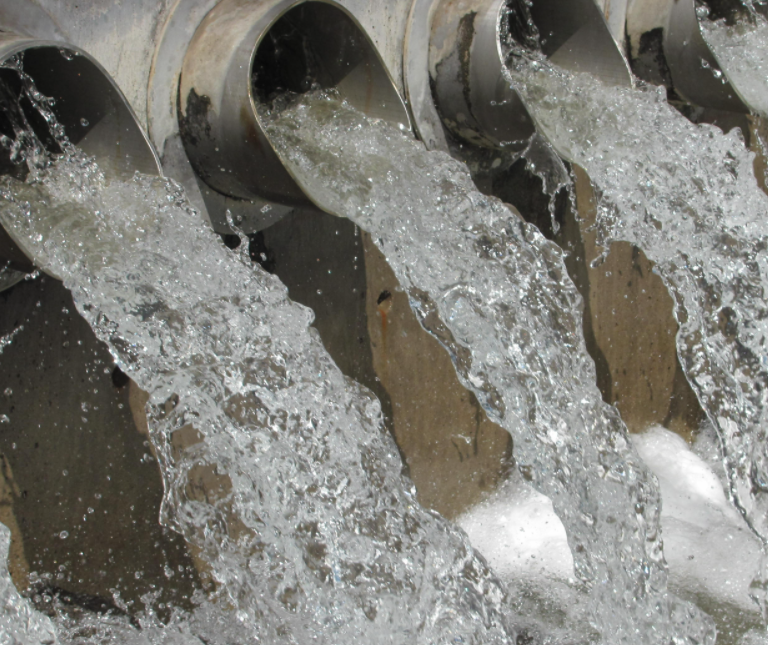Generally, most of the iron ions in reclaimed water come from industrial waste water. These waste water will be treated once before leaving the site, and only after reaching a certain standard can they enter the sewage treatment plant and domestic waste water for re-treatment, and can only be used after reaching the quality standard of reclaimed water stipulated by the state. in other places. The detection method of iron ions in reclaimed water is also very simple, and its principle is the same as the detection method of iron ions in drinking water. The color intensity of the iron-phenanthroline complex is proportional to the amount of soluble iron in water, and it is stable at a certain pH.

Reagents used for testing
1 hydrochloric acid2 Nitric acid
3 Sulfuric acid
4 Sulfuric acid solution: 1+3.
5 Hydroxylamine hydrochloride solution; 100g/L.
6 Acetic acid buffer solution
Dissolve 40 g of ammonium acetate and 50 mL of glacial acetic acid in water and dilute to 100 mL.
7 1.10-Philoxane solution
Dissolve 0.5 g of 1,10-phenoline chloride (monohydrate) in water and dilute to 100 mL; or dissolve 0.42 g of 1,10-phenoline chloride (monohydrate) in 100 mL of water containing two drops of hydrochloric acid. This solution is stored in the dark and is stable for a week.
8 Iron Standard Stock Solution
Prepare according to the preparation method in GB/T602, and 1 mL of this solution contains 0.1 mg Fe.
9 Iron standard solution
Pipette 10.00mL iron standard stock solution into a 100mL volumetric flask, dilute with water to the mark, shake well, 1mL of this solution contains 10ugFe, and this solution is used and prepared now.
Instruments required for testing
1 Spectrophotometer: can be measured at 510nm, prism type or grating type.2 Absorption cell: the optical path length is at least 10mm,
3 Oxygen bottle (Winkler bottle): capacity 100mL.
water sample collection
Total Iron SamplingImmediately after sampling, acidify to pH=1, usually 1mL sulfuric acid can meet the requirements of 100mL water sample.
Soluble Iron Sampling
Filter the sample immediately after sampling, and acidify the filtrate to pH=1 (add 1 mL of sulfuric acid per 100 mL of sample).
Detection steps
Plotting the calibration curve
Accurately pipette 0.00mL (reagent blank), 1.00mL, 2.00mL, 3.00mL, 4.00mL, 6.00mL, 8.00mL, 10.00mL iron standard solution into a series of 50mL colorimetric tubes, add 0.5mL sulfuric acid solution to each into a colorimetric tube and dilute to 50 mL with water. The following steps are carried out according to the total iron detection steps starting from "Add 1.00 mL of hydroxylamine hydrochloride solution and mix well...".The calibration curve was drawn with the iron ion concentration (mg/L) as the abscissa and the measured absorbance as the ordinate, and the regression equation was calculated.
Determination of total iron
Pipette an appropriate amount of acidified water sample into a 100 mL beaker. Add 5 mL of nitric acid and 10 mL of hydrochloric acid and heat the mixture to a slight boil. After 30 min, add 2 mL of sulfuric acid and evaporate the solution until white sulfur oxide fumes appear, avoid boiling dry. After cooling to room temperature, transfer to a 50mL colorimetric tube and add water to 50mL. Add 1.00 mL of hydroxylamine hydrochloride solution and mix well, add 2.00 mL of acetic acid buffer solution to make pH 3.5-5.5, preferably 4.5. Add 2mL of 1,10-phenanthroline solution and put it in the dark for 15min. Use a spectrophotometer at 510nm to measure the absorbance with the reagent blank as a reference.Determination of soluble iron
Take an appropriate amount of water sample in a 50mL colorimetric tube and add water to 50mL. Follow the same steps for total iron detection.The mass concentration of total iron and soluble iron content in the final regenerated water can be calculated according to the corresponding formula.
The above content comes from 《HG/T 4327-2012 Determination of Total Iron Content in Reclaimed Water by Spectrophotometry》



